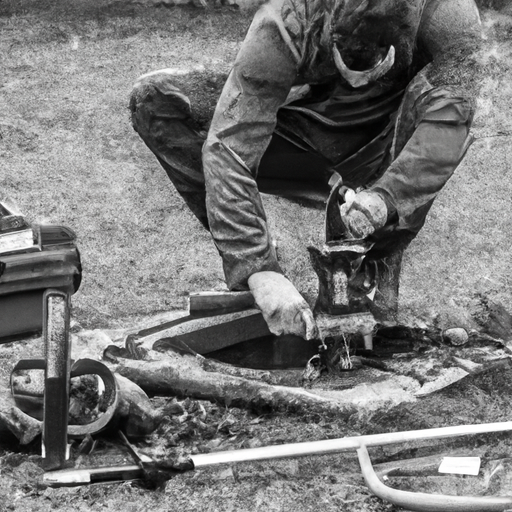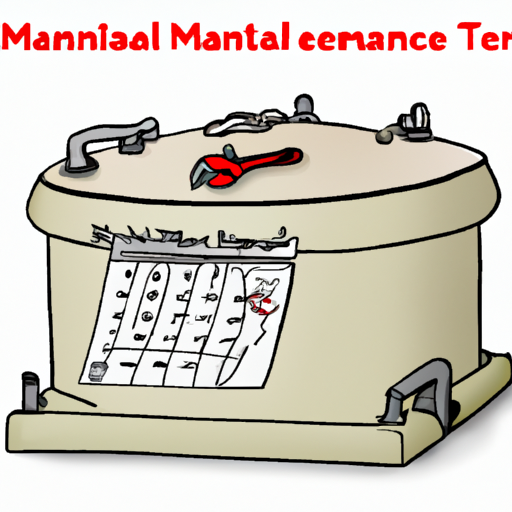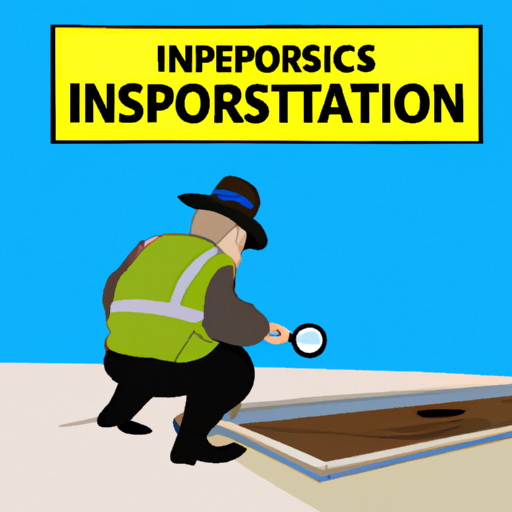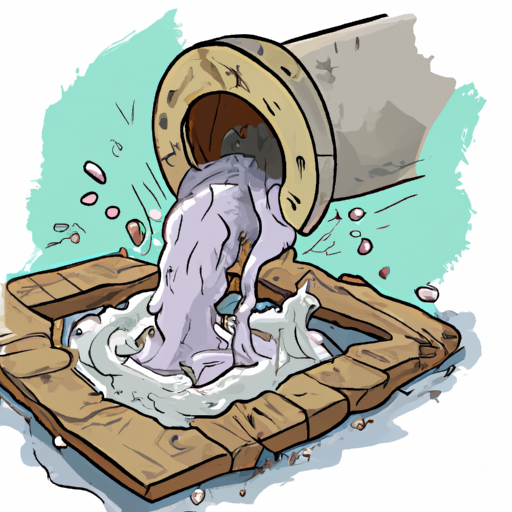Regular septic inspections are important to maintain the functionality and longevity of the septic system. They detect potential problems early, prevent costly repairs and contamination, and ensure efficient operation. Homeowners should consider the age of their system and routine maintenance practices when scheduling inspections. A step-by-step guide is provided to understand the verification process. Signs of potential problems include slow drains, foul odors, and sewer backups. Tips for maintaining a septic system include regular pumping, water conservation, and being mindful of what is flushed or drained.
Septic systems play an important role in the proper disposal of waste in homes and businesses that are not connected to the municipal sewer system. These underground wastewater treatment systems require regular inspections to ensure they are functioning effectively and to prevent expensive repairs or replacements. In this article, we’ll look at the importance of regular septic inspections and provide key factors to consider before scheduling them. We’ll also guide you through the step-by-step septic inspection process and highlight signs that indicate potential septic system problems. Plus, we’ll share valuable tips and best practices for maintaining your septic system between inspections. Whether you are a homeowner or a business owner, understanding the ins and outs of a septic inspection is essential to the long-term health and functionality of your septic system.
- 1. Understanding the importance of regular septic inspections
- 2. Key factors to consider before planning a septic inspection
- 3. What to expect during a septic inspection: a step-by-step guide
- 4. Signs of potential septic system problems: When to schedule an inspection
- 5. How to Maintain Your Septic System Between Inspections: Tips and Best Practices
1. Understanding the importance of regular septic inspections

Regular septic inspections are critical to maintaining the functionality and longevity of your septic system. Many homeowners may not realize the importance of these inspections until a serious problem occurs that results in expensive repairs or even system failure.
The main purpose of a septic inspection is to assess the overall condition of the system and identify any potential problems before they become more serious. During the inspection, a qualified professional will thoroughly inspect the various components of the septic system, including the tank, drain field, junction box, and pipes. They will also check for signs of leaks, blockages or structural damage.
By conducting regular inspections, you can detect and resolve minor problems at an early stage, preventing them from becoming serious problems. For example, a small crack in a septic tank may seem minor at first, but if left untreated, it can lead to costly leaks and contamination of the surrounding soil and groundwater.
Additionally, regular septic inspections can help ensure that your system is working efficiently. Over time, solids
2. Key factors to consider before planning a septic inspection

Before scheduling a septic inspection, there are several key factors that homeowners should consider. These factors can help ensure a smooth and successful inspection process and give homeowners a better understanding of the condition of their septic system. Here are some important things to keep in mind:
1. Age of Septic System: The age of your septic system can play a significant role in determining the need for an inspection. Older systems, typically those over 20 years old, are more prone to problems and may require more frequent inspections. If your septic system is relatively new, an inspection may not be necessary unless you experience certain problems.
2. Regular Maintenance: Regular maintenance of a septic system is critical to its proper functioning and longevity. If you’ve pumped your septic tank regularly and followed maintenance rules, the need for an inspection may be less pressing. However, if you have neglected maintenance or are unsure when your septic system was last serviced,
3. What to expect during a septic inspection: a step-by-step guide

A septic tank inspection is a crucial step for any homeowner or potential buyer, as it helps assess the condition and functionality of the septic system. Knowing what to expect during a septic inspection can help you prepare, ask the right questions, and ensure that the inspection is thorough and accurate. Here’s a step-by-step guide to help you understand the process:
Step 1: Planning and preparation
Once you contact a certified sanitation inspector, you will need to schedule an inspection date and time. It is important to note that the inspection should be performed when the ground is not frozen, as this may limit the inspector’s ability to evaluate certain system components. Before the inspector arrives, be sure to locate and open all access points to the septic system, such as the tank and junction box.
Step 2: Initial assessment and documentation
Upon arrival, the inspector will conduct an initial assessment of the property, taking into account various factors such as the system
4. Signs of potential septic system problems: When to schedule an inspection

Septic system problems can cause serious headaches for homeowners if left undetected or untreated. Therefore, it is extremely important to know the signs that indicate possible problems with your septic system. By recognizing these signs early, you can schedule a timely inspection and prevent further damage or costly repairs.
1. Slow Drains: If you notice that your sinks, toilets or showers are draining slowly, this could be a sign of a septic system problem. This may indicate a blockage or a problem with the drainage field that requires immediate attention.
2. Foul Odors: Foul odors around your property, especially near your septic tank or drain field, may indicate a problem with your septic system. These odors can be caused by a build-up of sediment or a leak in the system, both of which should be fixed immediately.
3. Backup or Overflow: One of the most obvious signs of a septic system problem is sewage backup or toilet or drain overflows. It
5. How to maintain your septic system between inspections: tips and best practices

Maintaining your septic system between inspections is critical to ensuring it functions properly and lasts. Here are some important tips and best practices for keeping your septic system in good shape:
1. Pump your septic tank regularly: It is recommended that you pump your septic tank every 3-5 years to remove accumulated solids and prevent them from clogging the drain field. This frequency may vary depending on the size of your household and the volume of wastewater generated. Consult with a professional to determine the appropriate pumping schedule for your septic system.
2. Conserve water: Using too much water can overload your septic system and make it less efficient. Use water-saving practices like fixing leaky faucets, using efficient appliances, and dividing your laundry instead of doing it all at once. Conserving water not only helps your septic system, but also lowers your water bills.
3. Be mindful of what goes down the drain: Avoid flushing or flushing anything but human waste and toilet paper down the drain.
In summary, septic inspections are a critical aspect of maintaining a healthy and functional septic system. Regular inspections not only help catch potential problems early, but also ensure that your septic system is running efficiently and effectively. By understanding the importance of regular inspections and considering key factors before scheduling them, homeowners can take proactive steps to protect their investment and avoid costly repairs. Additionally, knowing what to expect during a septic inspection and recognizing the signs of potential problems can help homeowners get ahead of any problems that may arise. Finally, following septic system maintenance tips and best practices between inspections can further extend the life of the system and prevent serious problems from occurring. Overall, by staying informed and proactive, homeowners can ensure the durability and functionality of their septic system for years to come.
 Purex find
Purex find